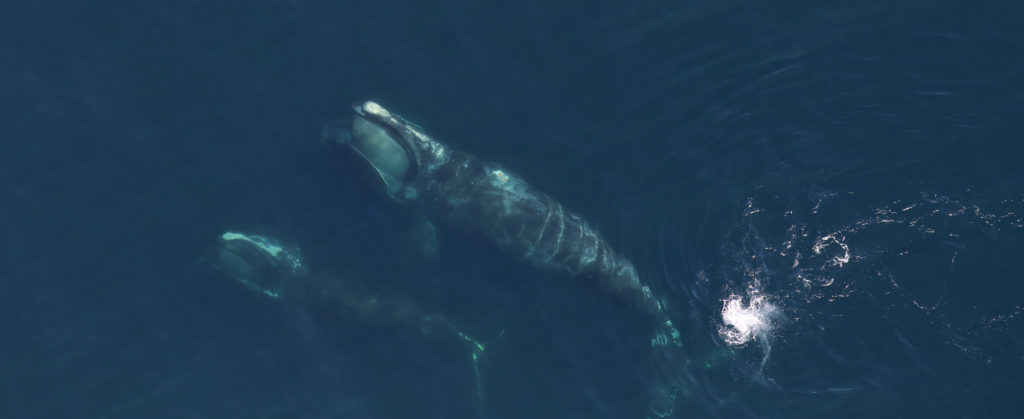NORTH ATLANTIC RIGHT WHALE
EUBALAENA GLACIALIS
North Atlantic right whales inhabit coastal waters of the Northern Atlantic and range from Florida to Iceland. Individuals can be identified and tracked by scientists by their unique patterns of raised white patches on their heads.
Right whales can live to 70 years, but due to human interference, their lifespan has decreased to about 40 years. Experts estimate there are only 400 right whales left, including less than 100 breeding females, putting them at dangerous risk of extinction.
How did they get to this point?
In the 1800s, right whales were hunted to the brink of extinction to collect blubber and baleen (keratinized cells, like our hair and nails, used to filter small prey like krill) for products like oil lamps and corset bones. In the 1930s, governments along the Atlantic agreed to protect right whales from whaling though there hasn’t been much recovery in the last 90 years.
The leading causes of death for right whales are entanglement in fishing nets and collisions with ships.
And while it does not result in death, evidence also suggests that noise pollution from ships prevents right whales from communicating, resulting in difficulties in breeding and sharing food. Since 2017, there have been 30 recorded deaths and only 12 confirmed births. If this rate does not improve, scientists at the Smithsonian Institution estimate right whales will be extinct within 20 years.

Will climate change affect right whales? Yes.
Rising seawater temperatures are causing their primary food source, copepods or small planktonic crustaceans, to move farther north along the coast of Canada. Because the whales migrate to the southern United States to give birth, this change forces them to swim much further, further exposing them to fishing nets and ships.
WANT TO LEARN MORE? DOWNLOAD OUR INFOGRAPHIC
OUR 2020 aquatic mammal PARTnERs
Cover Image Credit: NOAA Fisheries/Leah Crowe
